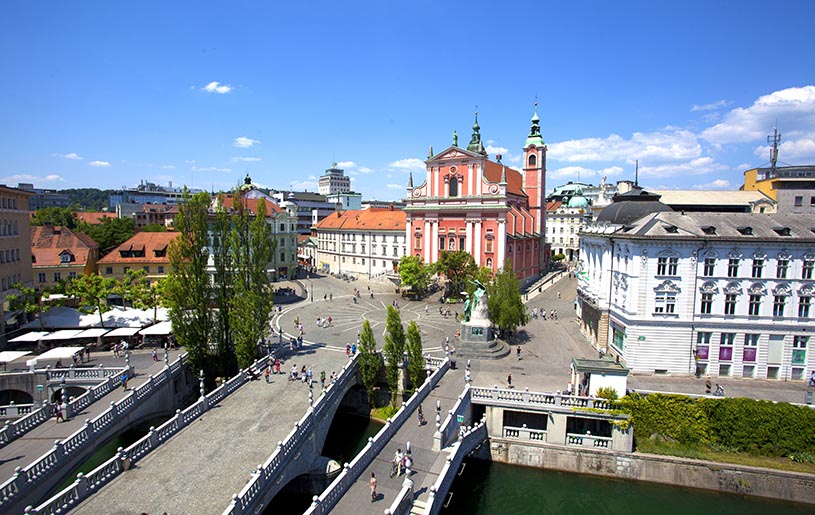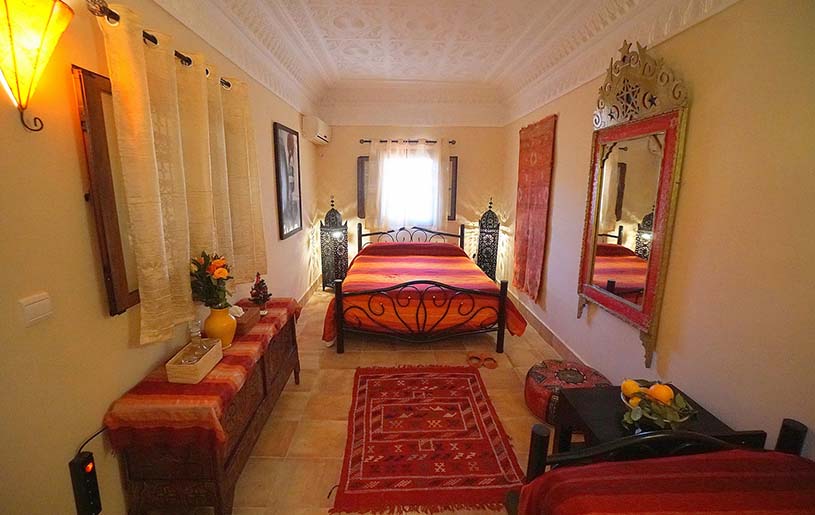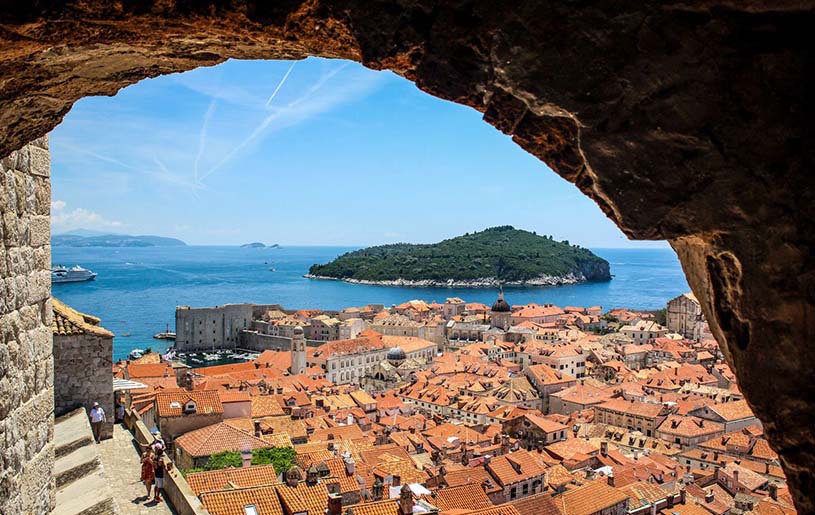Ljubljana—a name that may twist the tongue—is one of the most unexpected delights of my journey through Europe. It doesn’t dazzle like Paris, nor does it carry the weighty history of Rome, yet it captured me with a gentle, almost tender presence. There are no surging crowds or noisy commercial streets; Ljubljana’s charm hides in its winding alleyways—especially in the quiet of early morning and dusk, when the city is still asleep or just beginning to wake. The silent corners and weathered walls seem as if they were scenes borrowed from a fairy tale.
This time, I didn’t make elaborate plans or compile lists of must-see attractions. I simply walked into the city and followed my instincts, wandering through alleys between sunrise and sunset, trying to rediscover a long-lost sense of calm.
1. Morning in Ljubljana: The City Still Sleeps, but the Soft Light Wakes Me
I stayed in a family-run guesthouse on the edge of the old town, where the window overlooked a quintessential Central European scene—cobblestone streets, vine-covered walls, and old buildings with wrought-iron balconies. One morning, I was gently awoken by the faint light filtering through the curtains. The sun had not yet fully risen, and the entire city seemed draped in a veil of golden mist, so serene it felt wrong to make any sound.
I stepped quietly outside. The streets were empty—even the pigeons had not yet gathered. Ljubljana’s mornings wake slowly, from deep within. There were no honking cars, only the soft echo of my footsteps striking the stones.
I walked through Gornji trg, one of the oldest parts of the old town. The square was so still it resembled a painting. Dew still clung to the bench near the old well. I wandered further down an unnamed alley, where vines curled over window sills and water dripped gently, as if the city had just washed its face.
2. Into the Alleyways: No Map Can Guide You Out
The best places to get lost in Ljubljana are its web of narrow alleys—those quiet arteries where time seems to move more slowly. Some lead to familiar main streets bustling with cafes and bookstores, others unexpectedly dead-end into ivy-covered courtyard walls, leaving you nowhere to go but back the way you came. I especially love the irregular ones—they weren’t built for “efficiency,” but feel more like the city’s breathing spaces, quiet interludes in its otherwise steady rhythm. You don’t walk through them to get somewhere; you walk through them to feel.
One alley began behind the Slovenian National Library, winding downward in a shy, unassuming curve. Low, timeworn houses flanked both sides, their faded pastel façades patched with climbing ivy, cracked shutters, and decades of history. The scent of damp stone and old wood lingered in the air. As I walked, a ray of light slanted through a gap between rooftops, falling perfectly on an open window. A row of bright red geraniums bloomed defiantly on the sill, vivid against the peeling paint. At the alley’s end sat a secondhand bookstore, still closed, its wooden door adorned with handwritten notes and faded stickers. Its window displayed a line from a Slovenian poet: “In old books, one can live many lives.”
I stood in front of that line for a long while, letting the quiet seep into me. Travel, I realized, is not always about reaching a destination—it’s about encountering unexpected moments, like this one, where memory and meaning quietly converge, leaving an imprint far deeper than any landmark ever could.

3. Café by the Bridge: Warmth Begins with a Cup of Coffee
Getting lost can be tiring, but in Ljubljana, it feels like the city is always ready to comfort you. Cafés are everywhere—not the sleek, uniform kind with corporate logos, but warm, familiar places with mismatched chairs, chalkboard menus, and baristas who know half the regulars by name. They don’t try too hard; they just are. And that’s what makes them perfect.
By Tromostovje (Triple Bridge), I found a small café called Čas za kavo (“Coffee Time”), tucked slightly behind a curve of stone railings. A white cat napped on a warm cushion by the door, barely stirring as I stepped past. I ordered their signature black coffee—bold, rich, slightly smoky—and a slice of apple cinnamon pie, fresh from the oven. I took a seat by the window, where sunlight filtered softly through lace curtains, casting delicate patterns on the wooden table.
The city outside was just starting to stir—an elderly man pedaled by with a stack of newspapers strapped to his bike, a young woman jogged past with a golden retriever trotting beside her. Everyone moved with a kind of practiced ease, as if they were attuned to a shared rhythm, unhurried yet deliberate. The coffee was strong and fragrant, the pie perfectly balanced in sweetness and spice, its flaky crust melting on the tongue.
That morning, I didn’t check my map or itinerary. I simply sat, lingered, breathed. Occasionally, an old man would nod in greeting to the café owner, a silent ritual of familiarity. That ease, that quiet belonging—it wrapped around me like a warm scarf. For a brief moment, I was no longer a visitor. I was just another thread in the city’s morning routine.
4. Afternoon Light: Silence is the City’s Deepest Trait
Ljubljana doesn’t get loud—not even at midday. It maintains a sort of respectful hush, as though the city collectively agrees not to disturb the poetry of its own pace. Even in summer, there’s none of the frenzied buzz you feel in Paris or Rome. The old town in the afternoon feels like a sleeping castle, suspended in a slow, sun-dappled dream. Tree shadows stripe the cobblestones, turning the narrow alleyways into moving mosaics of light and dark.
I decided to climb up to Ljubljana Castle, not by funicular like most visitors, but by a quiet forest path that began just behind a stone wall near the river. The trail was barely marked, almost secretive, winding gently through the woods. There were no crowds, no camera shutters—just the rustle of leaves, the occasional flutter of wings, and the crunch of gravel underfoot. Wildflowers brushed my ankles, bees hovered lazily above blossoms, and a pair of squirrels darted up a tree trunk, pausing to observe me with curious eyes.
Sunlight filtered through the treetops in golden slivers, illuminating patches of moss and the edges of fallen logs. The further I climbed, the more the forest seemed to hush, as if asking me to listen. By the time I reached the castle, the city below had opened up like a painted storybook—red rooftops glowing in the light, green trees swaying gently, the Ljubljanica River curling through it all like a ribbon of glass. Distant hills framed the horizon, soft and infinite.
It all lay there so quietly, so humbly, as if unsure of its own beauty. Like a watercolor paused before the artist’s final brushstroke—peaceful, patient, and somehow complete in its incompleteness.

5. Dusk Arrives: Light and Music Echo in the Alleyways
Dusk is my favorite time in Ljubljana. As the sun sets, the city glows in a warm orange hue. Every stone, every window, every crack in the old walls seems to come alive under the evening light.
Back near Triple Bridge, street performers appeared—guitarists, saxophonists, and one young woman playing Slovenian folk songs on an accordion. People paused to listen, sitting on the steps or leaning on railings, chatting, sipping beer. The city’s energy slowed into a beautiful rhythm.
I bought a cup of local craft beer and sat by the river. Before me, gentle water; behind me, soft music. In that moment, I no longer felt like a traveler—I was simply living, breathing, part of the city’s quiet harmony.
6. Night in the Alleys: Lights Like Dreams, the City Whispers Softly
As night fell, the alleyways of Ljubljana no longer slept. Streetlamps lit up one by one, their golden glow casting dreamlike halos on stone and ivy. The old town’s narrow streets felt like pages from a vintage storybook. I wandered slowly, the echo of my steps the only sound, as if time had wound back a century.
Some taverns lit candles, some people sang softly, others read alone. The night gave everything a softness, even the air smelled faintly of wine and wood. In the dark, the city shed its identity as “Slovenia’s capital,” and became something more intimate—a quiet companion willing to share its secrets.
7. Getting Lost in the Alleyways Was How I Found Ljubljana
On my last night, I didn’t chase landmarks. I simply walked once more into that unnamed alley, watching how night faded and listening for the first birdsong before dawn. It was then I realized: what captivated me wasn’t the tourist sites—it was the tiny, unrecorded moments: the morning light, the cat, the coffee aroma, the dusk music, the echoing streets.
In Ljubljana, I learned one truth: travel isn’t about reaching a place, but about slowing down and building a rhythm with a city. Getting lost in its alleyways wasn’t a mistake—it was a gift. Because in those seemingly aimless wanderings, I didn’t just find a city. I found peace.






